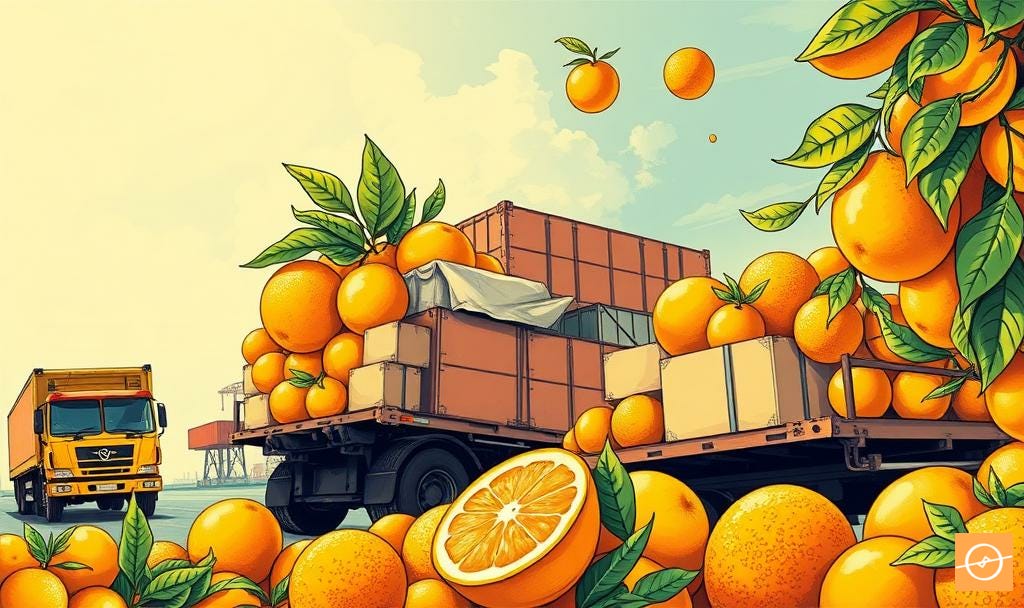Tracing the Truth: Why Input Provenance, Traceability, and Field Data Matter for Citrus Producers
In premium citrus markets, trust is currency.
Modern day buyers want to know your fruit isn’t just fresh… they want proof of where it came from, how it was grown, and under what conditions.
That’s where input provenance and traceability come in.
From Provenance to Traceability
Input provenance is the documented history of every material, product, or treatment applied to your crop; from fertilisers and pesticides to growth regulators and biologicals.
Traceability builds on provenance by following the fruit itself from the orchard all the way to the consumer; tracking each step in the chain:
Production: orchard block, planting date, rootstock, variety, agronomic history.
Harvest: date, crew, block location, and conditions on harvest day.
Post-harvest handling: pack-house, storage conditions, treatments, and cold chain management.
Distribution: logistics, shipment ID, destination market, and customer.
In practice, traceability means that if a market issue arises (for example, a pesticide residue breach or a fruit defect) you can trace it back to a specific lot, orchard block, or even spray event.
Why It Matters for Citrus
Regulatory compliance: Traceability is now a legal requirement in most export markets.
Market access: Premium buyers prefer, and increasingly demand, verifiable supply chain records.
Risk management: Rapidly identify and isolate problems to protect your brand and minimise losses.
Consumer confidence: QR codes and blockchain-backed traceability are becoming marketing tools in premium retail spaces.
Without reliable provenance and traceability, you’re relying on “trust me” in a world where buyers demand “show me”.
The Link to In-Field Sampling
Provenance and traceability are only as strong as the sampling that validates them. That’s where field sampling strategies come in:
Randomised / AI-guided block sampling: Avoids bias and gives representative coverage of your orchard.
High-risk zone sampling: Focus on areas with different soil, drainage, or canopy conditions that might respond differently to inputs.
Historical change detection: Compare today’s samples with past years’ results to spot trends or anomalies.
In citrus, sampling doesn’t just confirm compliance, it gives you early warnings.
For example:
Nutrient analysis can reveal deficiencies before visual symptoms appear.
Residue sampling can confirm whether your spray intervals are sufficient before picking starts.
The Role of Digital Data Capture
Traditionally, sampling, provenance, and traceability records were scattered across paper books and spreadsheets. That’s changing fast.
Modern orchard management tools now allow you to…
Log every input application in real time via mobile app.
Link sampling data directly to specific blocks or even tree clusters.
Upload lab results and match them against application and harvest records.
Integrate GPS and drone imagery to add location precision to traceability.
Generate compliance and export-ready traceability reports with one click.
When sampling results, provenance data, and movement records live in the same system, you can not only prove compliance but also make faster, data-backed management decisions.
From Orchard to Exporter to Market
A verified traceability system isn’t just for auditors. It’s an asset. It makes your fruit more attractive to buyers who demand supply chain transparency and want to reduce their sourcing risk.
It also keeps you in control when problems arise. Instead of recalling entire shipments, you can isolate affected lots quickly and keep the rest moving.
In closing….
For citrus producers, input provenance, traceability, and robust field data are no longer “compliance chores”. They’re strategic advantages.
Those who master them will not only protect their market access; they’ll strengthen buyer trust, justify premium prices, and secure a place in the most demanding global markets.
Have you taken a look at the Aerobotics solutions?



